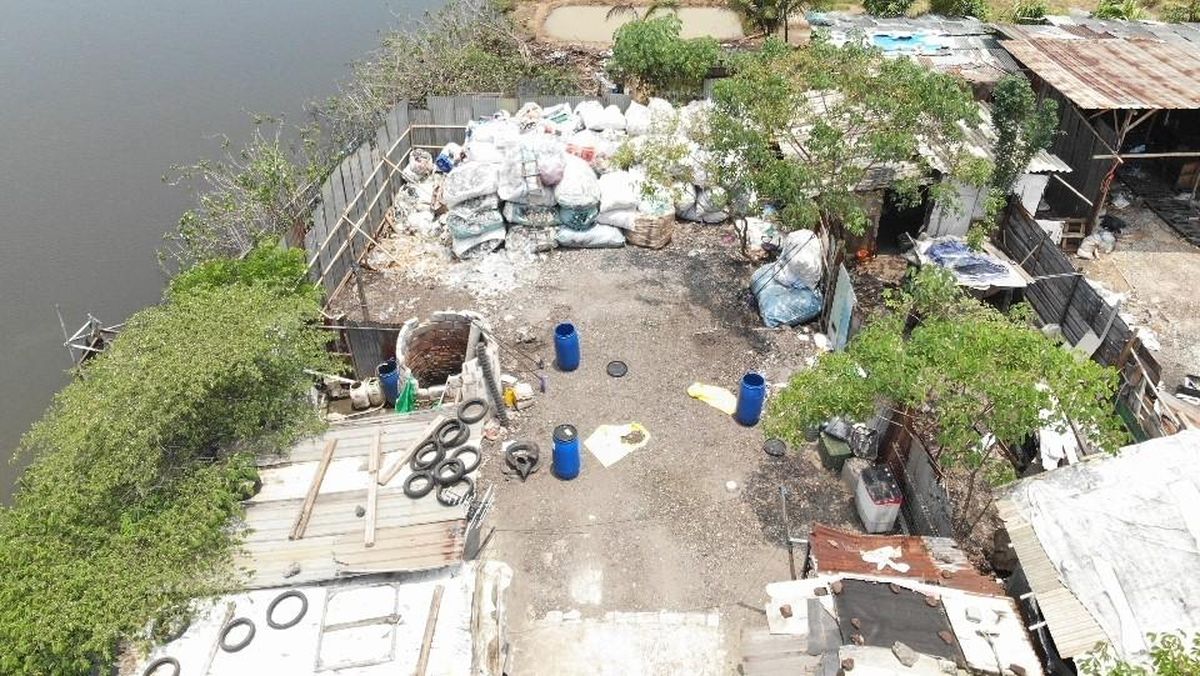Unless we’re talking Cate Blanchett, an actor who does more covers than your average Good Food Guide restaurant of the year, the notion of “Australian style” to many Europeans, perhaps understandably, is an oxymoron.
Sure, they may give a collective continental or two about Australian stylemeisters, say, Marc Newson, the celebrated Sydney-born industrial designer responsible for the iconic aluminum Lockheed Lounge, among other design treasures. Or Melbourne’s Martin Grant, the lauded Paris-based fashion designer who has designed uniforms for Qantas.
But try telling APT Luxury Travel and design practice Hecker Guthrie, the duo behind the creation of two bold new all-Australian (or nearly so) luxury river ships, local design doesn’t sell overseas.
Launched on European waterways this year, the vessels have been designed by Australians firmly with Australian travellers in mind.

First came APT Solara and then, more recently, its sister-ship APT Ostara, both Dutch-built with Australian-designed interiors and a passenger capacity of 154, a fraction of an average ocean-going liner.
Until now, Hecker Guthrie was better known for its portfolio of terra firma-based luxury residential projects, such as The StandardX Melbourne and the Pier One Sydney Harbour and at first, the firm looked to its inns for design inspiration. “Initially, we approached the brief for the design of the ships like a hotel project,” says Stacey Van Harn, a director at Hecker Guthrie, “But we quickly realised that we needed to design something more specific. Not a floating hotel, but a vessel with its own set of constraints and opportunities.”

First and foremost, adds Paul Hecker, founding principal at Hecker Guthrie, the brief was “Europe through an Australian lens”. But, he stresses, that didn’t mean “overt Australiana”. He adds, “There are no gum leaves or wattle motifs.”
Heckler Guthrie’s appointment and delivery represents how far Australian design has journeyed, especially among local travel brands, such as APT and Journey Beyond. Operators of the Indian Pacific and Ghan tourist trains, Journey Beyond, in a similar vein to the APT’s assigning of Hecker Guthrie, appointed Sydney’s Woods Bagot to design the luxury interiors of its new carriages.
David Cox, chief executive of APT Luxury Travel, says there is “a lot of ‘luxe-washing’ in the [river cruise] market … products are positioned as luxury without delivering.” He says, therefore, he has “enormous pride in what we’ve created” in Solara and Ostara, not just for APT, but also “as an Australian company making its mark on Europe’s waterways.”
APT’s two new river vessels have made a considerable splash among critics and clients since launching, which is confirmed by Traveller’s own recent experience aboard Ostara on a seven-day voyage between Munich and Amsterdam along the Main and Rhine rivers. Ostara and Solara also service the immensely popular Danube-Rhine Budapest to Amsterdam route.
APT’s new ships are only one part of the story of the boom in river cruising as traditional ocean cruise lines look to calmer riverine waters, such as Europe’s waterways, to expand their fleets.

APT will face a wave of intense competition as ocean-going lines, such as the US-owned Celebrity Cruises and France’s Ponant, enter the river cruise market with a fleet of new, design-led river ships. Furthermore, Emerald Cruises, the four-star sister of Australia’s Scenic ocean and river cruise brand, a long-term rival of APT, is launching a new vessel, Emerald Astra, next year.
Although this style of cruising is booming, the impulse for ocean-going lines to enter the luxury river cruise market is being driven by some crucial additional factors. River ships take a fraction of the time to build and fit out compared to sea-going liners and, furthermore, ship builders face long waiting times for the construction of any new ocean-based vessel
So, what does it take for a group of Australians to create a pair of ships for Europe’s riverine playgrounds for use by their well-travelled, and for that matter, well-cruised, compatriots?
Traveller asked the team behind Ostara and Solara to explain their design philosophy and their perception of the modern-day Australian traveller, on the following pages, as well as key, design-focused aspects and features of the new ships.
THE FLOW CHART
The Conversation Lounge

The idea for this open-air design feature came to APT co-owner, Lou Tandy, during the pandemic when so “many of us were missing connections with others”. The conversation lounge is a gathering point on the top deck for Solara and Ostara passengers to connect by day and night, and especially by night when it is illuminated by lanterns.
The Owner’s Cellar, 1927

The tasting menu of this intimate communal restaurant, one of six dining venues aboard Solara and Ostara, draws on the “tastes of Europe”, says APT co-owner Rob McGeary. Each course is paired with European drops sourced from the cellar within the wood-panelled confines of the restaurant, which borrows part of its name from APT’s foundation year.
Gruner Bar & Dining

Perhaps the most innovative feature of the two ships, this casual dining venue can be hydraulically elevated to the rooftop of the ships when in port and lowered under sail to avoid low-slung bridges. A specially designed hatch window opens to the top deck, making it, says Monique Lane of Fellow Hospitality, “the perfect venue for an afternoon drink in the fresh air.”
The photography

Design practice Hecker Guthrie collaborated with Nicholas Wilkins, an Australian photographer based in Amsterdam, who travelled the route of the ship and captured architectural moments along the way. His work now features in every guest cabin, not, says Hecker Guthrie’s Stacey Van Harn, as “postcard shots” but as “intimate vignettes” of key sites along the rivers.
The food and wine

”Food and wine are deeply tied to place.” says Hamish Guthrie, of Hecker Guthrie. “When looking out to a vineyard from the ship, and tasting wine from that same region, the experience becomes layered and immediate.” Dining, he says, builds onboard connections. “It creates community and to support that we designed the spaces as warm and generous but not over-styled.”
The lower deck rooms

Hecker Guthrie’s Paul Hecker says the design team realised that the lower deck rooms wouldn’t get as much natural light as the more expensive equivalents above. “So we treated them differently and leaned into the idea of the cabin as a cocoon. We lined the rooms in timber for texture and warmth. We didn’t want to pretend these were hotel rooms. They’re not. They’re cabins on a ship.”
The nautical notes

Stacey Van Harn says there are subtle “nods to the nautical” throughout Solara and Ostara, such as the generously proportioned timber armchairs in the top-tier Owners’ Suites, an allusion to the classic captain’s chair. The bronze cabin hooks, designed by Sydney’s Studio Henry Wilson, “resemble anchors in an abstract way”, while curved wall panelling and detailing “speak quietly to the language of the ship”.
THE DESIGN TEAM
LOU TANDY, CO-OWNER AND DIRECTOR, APT
My brief was to give Hecker Guthrie a set of guidelines that would result in a design that was both contemporary and timeless, to meld European elegance with unpretentious Australian ease.

Quality design is essential these days because quite simply, guests expect it. Australian guests are typically well travelled and discerning. We also have world-leading design in Australia. Why wouldn’t we expect it on a river ship?
What we set out to achieve was a modernisation of the river cruise experience from the perspective of the sophisticated Australian traveller.
The one small design feature I love is the curated art collection. We partnered with Otomys Contemporary Art Gallery in Melbourne to commission works that feel both sophisticated and deeply connected to place. A brilliant sculptural rope installation by Australian artist Sarah Parkes, for example, honours the heritage of river travel and nautical ties.
Food and wine are vital because it’s about more than just dining – it’s about atmosphere, connection and choice. A standout is Gruner Bar & Dining, a world-first hydraulically lifted restaurant.
PAUL HECKER, FOUNDING PRINCIPAL, HECKER GUTHRIE
My brief was to design the best ship on Europe’s rivers and it wasn’t just about aesthetics. It was about rethinking what river cruising could be, and how we could elevate that experience for a predominantly Australian audience.

Quality design is essential these days because people are more aware. They travel, they notice detail, and they appreciate quality. They’re looking for value, not in a transactional sense, but in experience.
One of the most challenging aspects in designing a river ship was space. It’s the most obvious and the most complex issue. The dimensions of the ship are set. There are strict limitations on height, width and length to allow it to pass through locks and under bridges.
One small feature I love is the Gervasoni furniture from Italy. All original, all European-sourced. Many ships are filled with generic fit-out furniture which is cost-efficient but lacks soul.
My favourite spot on the new ship are the rooms. Sitting in a beautiful chair, watching the world drift by, cup of tea in hand, it’s magic. The pace, the light and the quiet.
What distinguishes river cruising from ocean cruising is the constant proximity to place. With ocean cruising, you can spend days at sea. But on a river cruise, the villages, the trees, the bridges are always present. River cruising offers something more reflective. It’s less about the entertainment and more about the journey.
ROBERT McGEARY, CO-OWNER AND DIRECTOR, APT
My brief was to build a ship designed by Australians for Australians as a relaxed luxury home away from home to explore Europe.

Quality design is essential these days because Australian travellers differ from many others in that they have a larger investment of distance, duration and cost. They want the experience to feel “worth it”.
What we set out to achieve was to provide a superior offering. Other international travellers usually cruise for eight days whereas the Australian traveller travels to Europe for around four to six weeks. So we aimed to create a ship that feels like a home base for a two-week journey.
The one small feature I love is how guests are provided with various dining experiences, so there is a reduction of numbers at each of the venues and not one traditional main restaurant.
Food and wine is vital because for Australians, food and drink are a cultural gateway. They love trying regional wines or unique dishes that connect them to the place they are visiting. In luxury travel, dining isn’t just nourishment, it makes guests feel looked after. Many travellers’ most memorable moments are tied to dining.
What distinguishes river cruising from ocean cruising is three things. One: the ship doesn’t rock and roll. You glide down the river, and sometimes even forget you’re on a ship, it’s so smooth. Two: European cities are built around the river and most days we are docked within walking distance of town centres. Three: an intimate group of like-minded travellers, no more than 154 passengers so it feels personal, connected and deeply immersive in a way ocean cruising simply can’t match.
MONIQUE LANE, HOSPITALITY CONSULTANT, FELLOW HOSPITALITY
My brief was to create the food and wine experiences for guests onboard Solara and Ostara.

Quality design is essential these days because it is transportive. When design is of good quality you really can feel it. You become present which is what travel is all about. When a chair is uncomfortable or the lights are too bright, people aren’t relaxed.
What we set out to achieve was the creation of six food and wine venues that are as good as venues you’d find on land. No small task. We wanted to develop individual and differentiated dining experiences across the ship, so the guests could have variety.
The most challenging aspect was the operational realities of delivering multiple venues and menus coming from the one kitchen at the same time – absolute madness! But we made it work.
Food and wine is vital because it tells a story of the journey and our menus reflect that. We focused on seasonal and regional dishes, wines and ingredients. You can literally savour the journey.
To me, river cruising these days is all about coming back to the same place – with my clothes in the same spot, and, once you start, no airports and transfers – while being able to explore an array of cities and cultures. Also, visiting as many markets, wine bars and street vendors as possible.
HAMISH GUTHRIE, FOUNDING PRINCIPAL, HECKER GUTHRIE
What we set out to achieve was to create something that felt distinctly European, but seen through the eyes of Australian designers, and delivered for an Australian operator and audience. It meant thinking not just about the aesthetic, but about how Australians experience travel.

I wanted the ship’s guests to be able to feel connected. The experience should feel unmistakably European, not generic. We also wanted guests to feel relaxed. There’s an ease to the way Australians travel with design a balance between familiarity and foreignness.
One feature I am most proud of is the restraint in the design. It would have been easy to mimic the opulence of Europe, to bring in ornate flourishes or lean into nostalgia, but we deliberately stepped away from that. Instead, we’ve worked with a refined, tonal palette and allowed the richness to come through in quieter ways.
The one small feature that I love is the subtle shifts between spaces. No two guest rooms are the same. The palettes evolve gently, and the artwork changes room to room. These layers are quiet, but intentional. Some of the styling cues shift with the time of year. The way the beds are presented, the soft furnishings, even the mood of the lighting. These are subtle moments of change that help reinforce the idea of movement and place This isn’t about creating an Australian space in Europe. It’s a narrative, brought to life through layers like art, texture and tone.
APT’s 15 day classic Magnificent Europe rivers cruise between Budapest and Amsterdam, from $8995 a person, including flights. APT’s seven nights, eight-days Highlights of the Rhine and Main cruise between Amsterdam and Munich, from $3895 a person, not including flights. See aptouring.com
The writer travelled as a guest of APT


















































